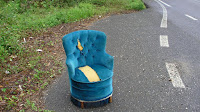961 MARTINKA BOBRIKOVA - OSCAR DE CARMEN - BED AND BREAKFAST PRAHA
962 SINQUENZA - BOTTLE IN A MESSAGE
963 PAUL DOEMAN - SET
964 FREDRIK LUND - BODY IN SPACE
965 NIKÉ NAGY - PINK AND GREY
966 MARÍA ENRÍQUEZ - DOS MUNDOS
967 ANA MATEY - CHAIR
969 MARISA CAMINOS - CLON - PUNTO DE FUGA (III)
970 TOMOTO - MEAT UPDATES ++ 115 ++
972 MANOLO CALVO - CASA STUDIO MADRID
973 FRANÇOISE ROHMER - POTS - PROVENCE
974 TEREZA ERBENOVÁ - GARDEN AND STUDIO
975 JESÚS LEÓN - COCONUT - MEXICO CITY GLAM SERIES
976 MANUEL MAQUEDA - MIEL
978 PAULA LLOVERAS - POLITICAL FILTER
979 LLLL - YOUTUBE BREAKFAST - HIGH CLASS (1)

Adonis aestivalis
Anthemis arvensis
Anagallis
Agrostemma githago
Centaurea cyanus
Coreopsis tinctoria
Dianthus barbatus
Digitalis purpurea
Eschscholzia californica
Gypsophila elegans
Glebionis segetum
Papaver rhoeas
Silene latifolia
Viola tricolor
NARRATIVES BY ANTO LLOVERAS>
WITH ASSOCIATED WILD FLOWERS In biology, naturalisation (or naturalization) is any process by which a non-native organism spreads into the wild and its reproduction is sufficient to maintain its population. Such populations are said to be naturalised. Some populations do not sustain themselves reproductively, but exist because of continued influx from elsewhere. Such a non-sustaining population, or the individuals within it, are said to be adventive.[1] Cultivated plants are a major source of adventive populations. Naturalised species may become invasive species if they become sufficiently abundant to have an adverse effect on native plants and animals.










